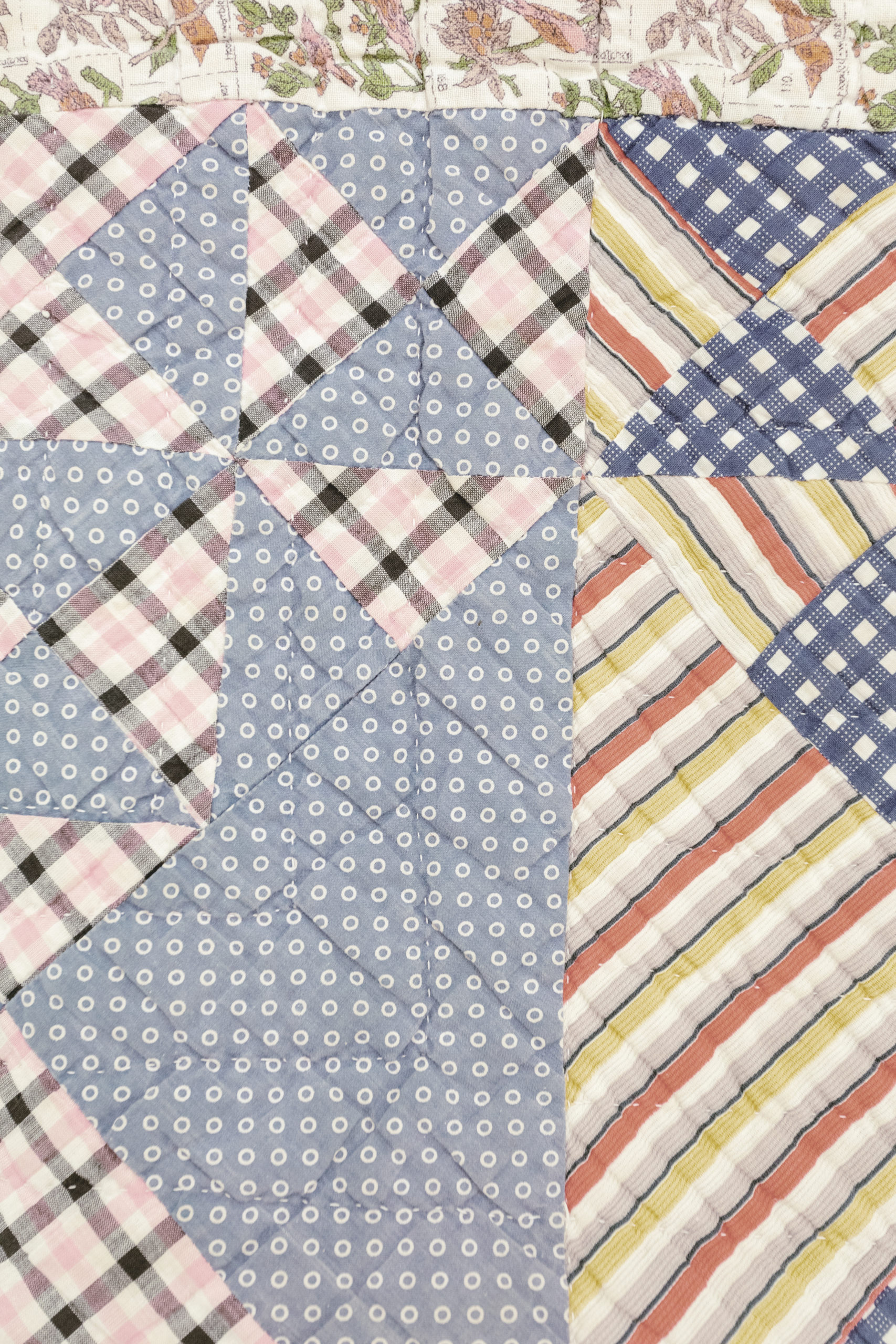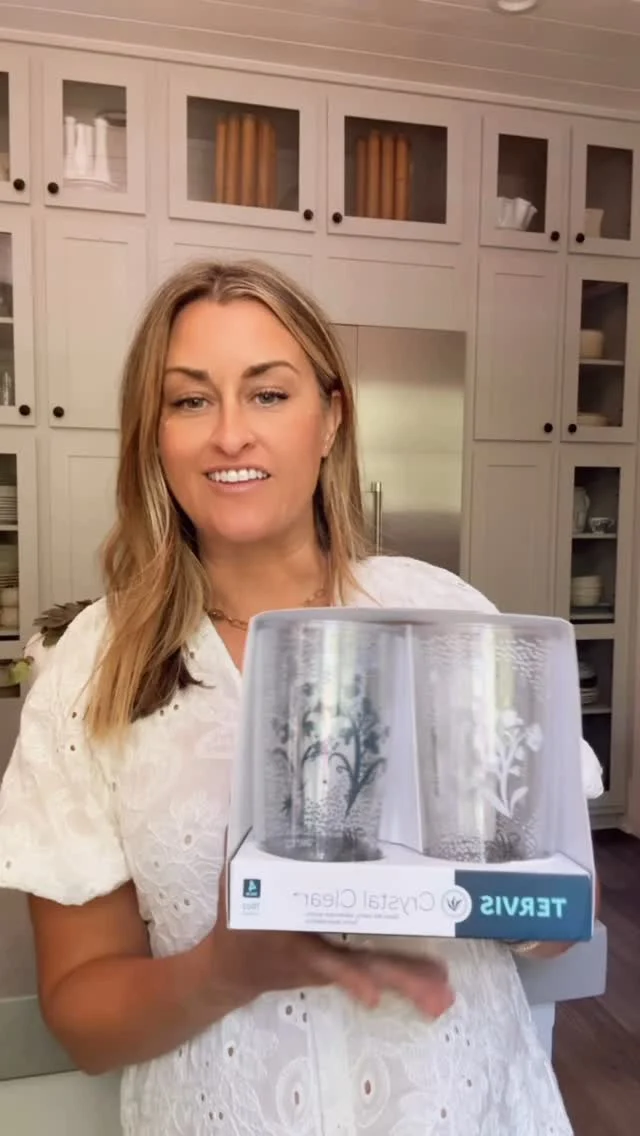Vintage quilts are just one of those things that seem to get better with time and I love giving them a second life in my home as decor or bedding. I am excited to share my knowledge of these heirloom pieces and the craft they are made with.
Vintage Quilts
Vintage quilts are one of my favorite items to source when I am out and about at antique and vintage shops. I love the uniqueness they offer to the home, the stories they hold from their various fabrics and designs, and the nostalgia they carry. Through sourcing these quilts, I have become enthralled with learning more about their history, and the old craft of quilting that has been passed down through many generations across so many cultures.
History of Quilts
The art of quilting can be dated back to as early as the medieval times and found across different regions and cultures of the world. Different cultures have used the art for different purposes, from garment creation to preservation of family stories to bedding, as it is commonly used today. Throughout history, quilts can be found made from a variety of materials like elaborate fabrics, old clothes, feed sacks, and other materials. The designs and fabrics used in quilts can often identify their age and region or culture it was created in.
American quilting has been popular since the 1700’s when early European settlers brought the craft with them to the new world. Oftentimes, quilting was used as a social gathering where women would gather together, share fabrics, and piece together quilts for use in their home or as a gift for a new baby or marriage.
Quilt experts today have a keen eye and knowledge to be able to identify a quilt’s age and origin by its design, fabrics, sewing methods, and natural wear and tear. An interesting rule of thumb from quilting experts: a quilt is no older than its newest fabric. While I tend to source quilts that carry a special story and beauty in their aesthetic and make to use in my home, I highly recommend consulting a quilting expert or owner at a local quilt shop if you believe you have a historic quilt.
Vintage Quilt Patterns





Sourcing Vintage Quilts
When out looking for antique and vintage goods, I like to look for quilts that speak to me and stand out. Beyond the aesthetic of a vintage quilt, I think it is important to pay attention to the quality and condition of the quilt. It is often inevitable that quilts has worn areas and spots in need of mending. While I love the character these spots add to the piece, I like to make sure its condition is not compromised by this for future use. Quilts that are truly torn and tattered and deemed unusable for their intended purpose are termed “cutter quilts” and are often used by crafters to cut up and make new items with the remaining good pieces of the quilts. Some of these cutter quilt items you see are quilted dolls, quilted jackets, decorative pillows, stockings and other smaller craft items.
As I mentioned before, there are quilting experts you can consult if you have a vintage quilt you would like to know the approximate age and story.


How to Care for Vintage Quilts
Through research and trial and error, I have learned the tricks of the trade for caring for vintage quilts. It is so common to grab a great vintage quilt find that it needs a little love and cleaning before adding it to your home. Don’t fret! Here are some simple, at-home tips.

First and foremost, NEVER dry clean a quilt. The methods and chemicals used for dry cleaning have been shown to weaken older fabrics and stitching found on vintage quilts. To wash them at home, I first recommend spot checking the quilt for any areas that need mending. Fix up these areas as needed before washing the quilt to prevent any further deterioration.

When washing my quilts, I put them in a delicate cycle in cold water with a gentle detergent. I then let them air dry either outside on top of towels or laid out on a bed with a fan blowing on it. If you are worried about putting your quilt in the washing machine, you can opt for hand washing it in a tub with a gentle detergent and letting it soak.
To continue the care for your vintage quilts in your home, I have a few recommendations to preserve the integrity of your heirloom pieces. Above all, be kind to them and use them with love. Keep up with their mending as needed and avoid having them in direct sun exposure for long periods of time – this can cause their coloring to fade. If you are using a quilt as decor on a chair or in a basket, I recommend occasionally refolding the quilt to change up the creases so not to weaken points of the fabric over time.

With all this being said, I love having quilts in my home because they are such quality pieces that have withstood time and use and I love being able to extend their lifetime in my home. In my opinion, quilts are one of those things that seem to get better with time; the more use they get, the more soft and comfortable they become.

heirloomed is a lifestyle brand with a mission of “keeping heirlooms around for another generation.” Our blog features stories about family recipes, creating traditions with your family, interior design and entertaining by mixing new and vintage pieces, classic style, and small town + historic travel. Our shop features a collection of “goods inspired by the past, for generations to enjoy” with an array of products and meaningful gifts including linen aprons, tabletop linens, art, ceramics and beyond. Learn more at www.heirloomedcollection.com.


















Recent Comments